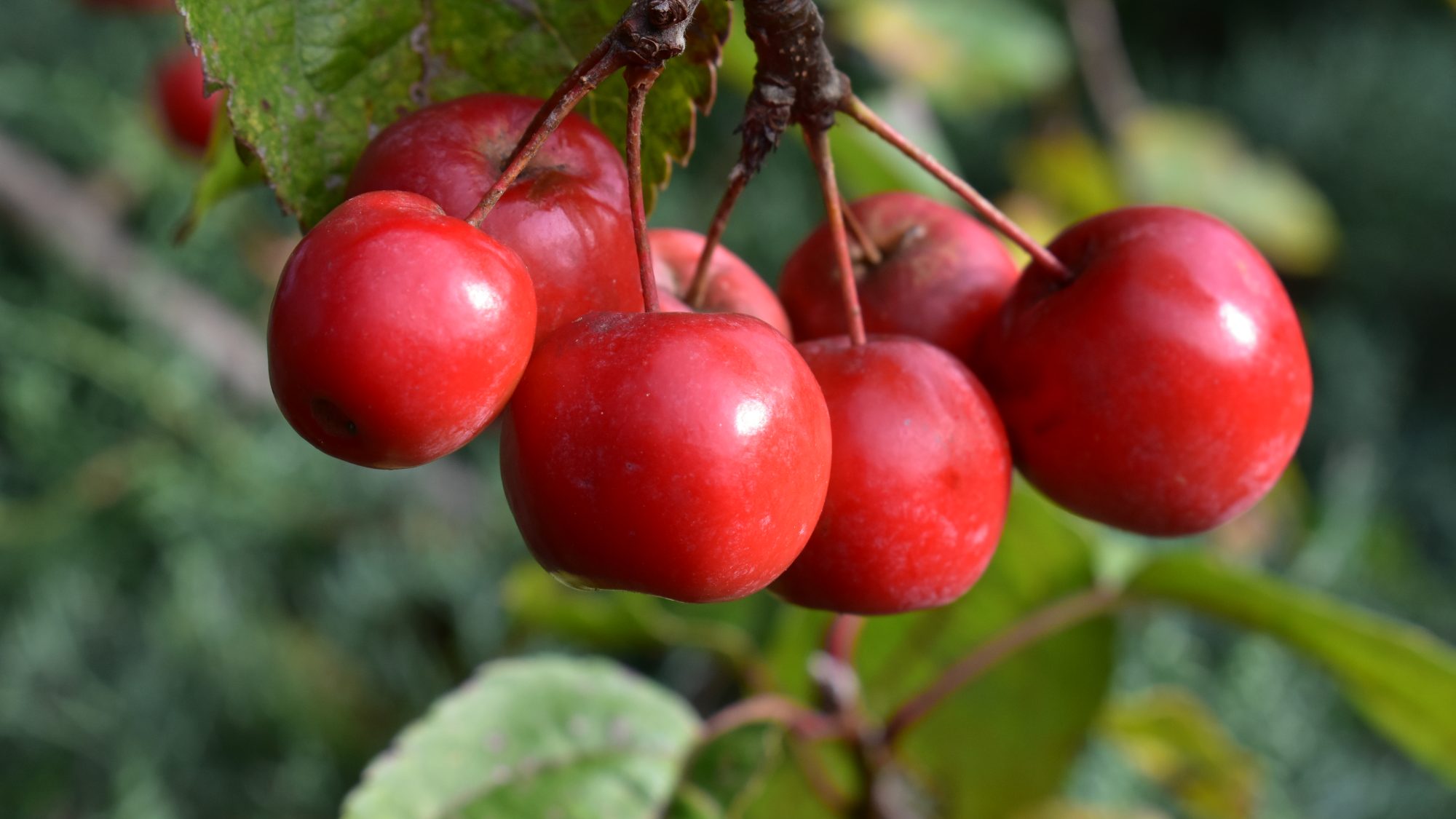One of the most beautiful crab apple varieties is Malus x robusta Red Sentinel, which blooms with pink-white flowers in late spring and then bears lots of shiny, round, red fruit. During fall and winter, the fruits stay on the branches and look great with the changing colors of the leaves before they fall. Providing year-round interest, its perfect for a small garden.
Grow Malus x robusta Red Sentinel in fertile, well-drained soil in full sun to partial shade. Remove dead, diseased and crossing branches in winter. Advertisement.
The Malus x robusta ‘Red Sentinel’ is an exceptionally decorative crab apple tree valued for its multiseason interest. With its profusion of blossoms, persistent fruits and colorful foliage this compact tree livens up gardens year-round. In this guide, we’ll explore why Malus ‘Red Sentinel’ is such a prized ornamental variety and how to cultivate it successfully.
Malus ‘Red Sentinel’ is a hybrid crab apple that likely arose as a seedling between Malus robusta and Malus ‘Red Jade’. It was first introduced commercially in New Zealand in the 1980s by Duncan and Davies Nurseries
This small deciduous tree reaches a mature height and width of about 8 meters. It has an upright oval form with arching branches. The dark green leaves reach 8 centimeters long and turn golden yellow in autumn.
In spring, plentiful white or pale pink flowers 2.5 centimeters wide emerge. These give way to abundant cherry-like fruits approximately 2.5 centimeters across. The fruits mature to a glossy red color and persist from late summer into winter.
Key Features and Benefits
There are many reasons Malus ‘Red Sentinel’ is treasured by gardeners:
- Profuse spring blossoms attractive to pollinators
- Vivid red fruits that persist through winter
- Yellow and orange autumn leaf color
- Compact, upright form ideal for small spaces
- Greater disease resistance than some crab apples
- Provides food and habitat for birds
- Striking structure with intricate branching
This ornamental crab apple offers multi-season beauty in a tidy package. It shines as a focal point or specimen tree.
Growing Conditions
Malus x robusta ‘Red Sentinel’ adapts readily to various conditions. It prefers full sun exposure but also tolerates part shade. Well-drained, moderately fertile soil kept consistently moist works best. Avoid wet, poorly drained sites.
Though quite hardy, provide some shelter from harsh winds. Situate it where its ornamental features can be viewed and appreciated. Its relatively petite size makes it ideal for urban gardens. However, leave ample room for growth and air circulation.
This adaptable, low-maintenance tree has no serious pest or disease issues. Potential threats include aphids, mites, apple scab, fireblight, and canker. Proper siting and care limit problems. Occasional pruning in late winter removes dead wood and shapes the tree.
Buying and Planting Malus ‘Red Sentinel’
Purchase Malus ‘Red Sentinel’ from reputable nurseries as young container-grown or balled-and-burlapped trees. Size at planting ranges from 5-8 feet tall. Select trees with healthy root systems and intact leader branches.
Prepare the planting site well in advance by deeply cultivating the soil and removing weeds. Dig a hole slightly wider than the root ball and backfill with enriched soil. Set the tree at the original growing depth and water thoroughly. Apply 2-4 inches of organic mulch around the base. Stake the tree initially if needed for stabilization.
Ongoing Care and Maintenance
Proper care enhances the ornamental qualities and lifespan of Malus ‘Red Sentinel’. Water regularly during the first two years to help establish deep roots. Thereafter, water during droughts, aiming for 1 inch of rain or irrigation weekly.
Replenish the mulch layer annually. Apply a balanced, slow-release fertilizer in early spring. Prune only to remove damaged branches, improve structure, or contain size. Disinfect tools between cuts to avoid disease transmission.
Monitor for common pests like aphids and treat promptly if populations swell. Pick up and dispose of fallen fruits to reduce pest overwintering sites. Enjoy the winter appeal of the persisting ruby fruits.
Landscape Uses for Malus ‘Red Sentinel’
Thanks to its multiseason appeal and compact size, Malus x robusta ‘Red Sentinel’ complements diverse landscape situations:
- Accent or specimen tree
- anchors for island beds
- Entryway greeter
- Containers or raised planters
- City courtyards and patios
- Grouped in clusters or small groves
- Borders and foundation plantings
- Near decks, terraces, and seating areas
Allow it to star as a focal point against backdrops like evergreens. Pair it with contrasting flowering trees or shrubs. Site it near pathways where its seasonal displays can be admired up close.
An Ornamental Beauty for All Seasons
If you seek a crab apple tree that earns its keep throughout the year, look no further than Malus x robusta ‘Red Sentinel’. Few other trees pack as much visual punch into such a petite package. Make room for this outstanding, low-maintenance specimen in your landscape and enjoy its year-round embellishments.

Malus ‘Red sentinel’ and wildlife
Malus ‘Red sentinel’ is known for attracting bees, beneficial insects, birds, butterflies/moths and other pollinators. It is food for caterpillars, has flowers with lots of nectar and pollen, gives birds a place to live and shelter, and has seeds.
Malus ‘Prairifire’ (Crabapple) // One of the BEST Red-leaved, Small Growing Crabapples
FAQ
Is Malus Red Sentinel edible?
Does Malus like sun or shade?
What are the drawbacks to crabapple trees?
How big do Malus trees get?
- A Complete Guide to Caring for Yuki Cherry Blossom Shrub - January 23, 2025
- Identifying Red Hot Poker Seeds: What to Look For When Harvesting Torch Lily Pods - January 23, 2025
- A Complete Guide to Harvesting Evening Primrose Seeds - January 23, 2025
